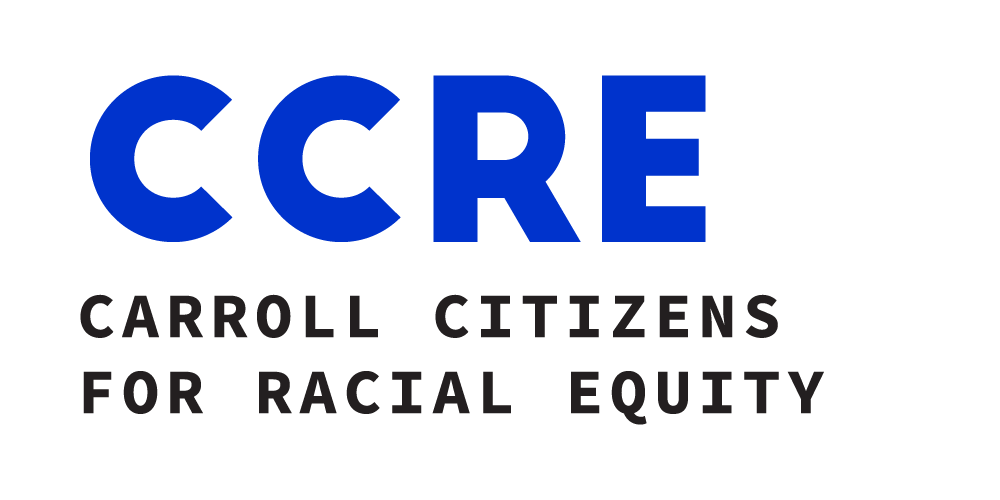Carroll Citizens for Racial Equality's (CCRE) Bridging the Gap Conference:
A Participant's Review
by Lindsay James
"If I am not for myself, who will be for me? If I am only for myself, what am I? If not now, when?" - Rabbi Hillel (and a song I learned at Jewish summer camp).
If I don't start using my white privilege to fight racism now, when will I? So, on May 21, I put aside my bottomless to-do lists at work and at home to attend Part 2 of CCRE's Bridging the Gap annual conference: "ANTIRACISM: WHAT DOES IT MEAN? WHY NOT BEING RACIST ISN’T GOOD ENOUGH AND HOW TO BE ANTI-RACIST." I'm glad I went because it made me think, inspired me, and was a unique opportunity to participate in intimate conversations about race.
The conference was a blend of "break-out group" conversations and well-prepared presentations on the various forms of racism in the U.S. The presentation recognized the history and current incarnations of overt racism in the U.S. However, the meat of the presentation was in illustrating more nuanced but still harmful ways that racism manifests in the U.S. For instance, one of the presenters, Dr. Richard M. Smith, defined a spectrum of attitudes towards race, from "segregationalism" (black people are inferior) to "assimilationism" (black people are fine if they assimilate into white culture) to "anti-racism" (there's nothing wrong with black people or culture; we must end racism). Assimilationists, he explained, say that BIPOC communities would be treated equally if they would just be more like white people. One example of assimilationism was the way that school districts implemented the school desegregation mandated in Brown v. Board of Education; they bussed black children into white schools. This was the second time recently that I had heard criticism of this famous Supreme Court decision and its remedy. In public school, I remember this case being presented to me as nothing less than a clean civil rights victory and a proud example of the U.S. government's system of checks and balances. The contrast between the way school desegregation is taught in schools and the real criticism it invites, is a good reminder to me of the importance of constantly re-evaluating my own "knowledge" and opinions on the topic of racism (and every other topic).
While the presentations were valuable, my favorite part of the conference was the chance to engage with people who were as eager as I to have hard conversations about race. We had two break-out sessions to discuss with fellow participants what moments in the past week had made us feel some emotion related to race and where we were in our anti-racist journey ("fear zone", "learning zone" or "growth zone"). The moment that hit me the hardest was when one black woman said she was afraid to call-out racism and microaggressions at work because she didn't want to learn that colleagues she thought were friends would not have her back. This struck me because I often think about the tangible effects of racism, even the physical effects from the stress of it; but I had not thought about the loneliness of it. I hope that I notice and act in situations where I can be a support to a lone voice.
One of the final slides of the conference gave me a new, powerful quote to add to my arsenal of inspiration:
"You can choose courage or you can choose comfort. You cannot have both." - Brené Brown.
I have a toddler and a full-time job, but in the scheme of things, it was easy to take a few hours off of work to participate in a conference. What can I do that takes real courage? What would really make me uncomfortable?
